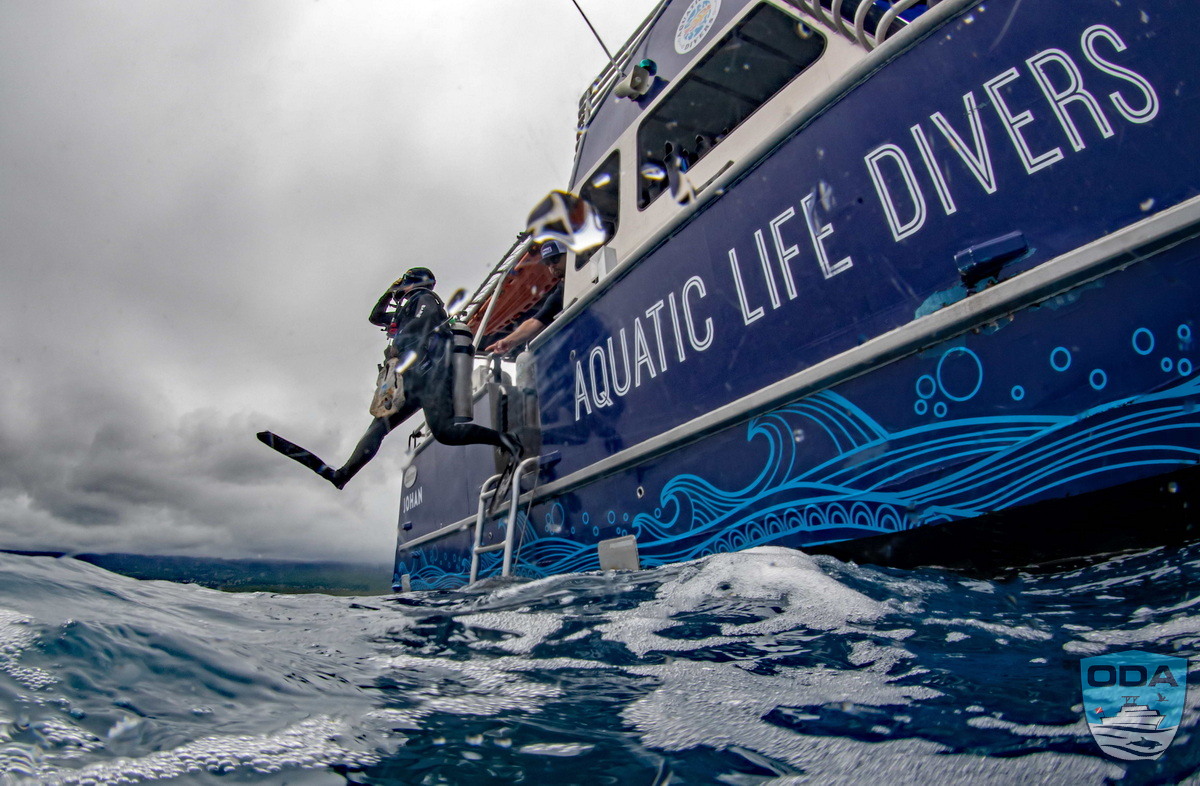Editor's Note: Be sure to watch the amazing video after you read this uplifting (and humorous) story!
By Jeff Milisen, ODA Volunteer andAdvisory Board Member
When I was five years old, I threw my empty juice box into a river in Colorado.
My mom was furious and explained that littering was not only gross but illegal. I spent several months on the lam, hiding whenever I heard a siren.
I’m now many years beyond the statute of limitations, but the experience became an important lesson about tending to the world around me. This is part of why I was so upset while exploring a new area of Kailua Bay, only to find a field of tires carelessly resting on the substrate (coral and/or rocks). Last year, we pulled 60 tires from this reef. We recently returned to finish what we started.
You probably haven’t given much thought to tires beyond kicking them. They’re round and bouncy, you probably own at least 4, and there’s always that one friend who judges you when the tread is getting low. You probably didn’t know that tire wear particles contribute 78% of the microplastics in our world, and that every tire uses 5 gallons of oil and hundreds of other chemicals to produce. We produce 2.5-3 billion tires annually, and their average lifespan is around 40,000 miles, which is where our story begins. What are we supposed to do with 3 billion tires once they’ve reached the end of their 40,000-mile road?
That’s the question that was staring our community in the reef, and the answer started with a lot of organization. Most people don’t realize how much work it takes to coordinate the logistics of bringing together multiple organizations and dozens of volunteers. Our partner Body Glove was ready to lend a hand before we even asked.
Our next call was to Blue Ocean Mariculture, who, again, quickly gave us a crew and one of their landing crafts.
We then got on the phone with Doug from Aquatic Life Divers, who had no issues lending us one of his dive boats.
For snorkel support, Colin at Captain Zodiac didn’t even let me finish my inquiry before he broke in with “I’m in. How many boats do you want?”
A quick call to Big Island Scrap Metal and then mobilizing our heartiest volunteers, the organizing was mostly done. It sounds much simpler when you write it out, but this took 1.5 months!
It would be disingenuous to claim that we did it in one grab. The eager underwater wizards at Body Glove got a jump on things 8 months ago to start prepping, moving tires into piles/groups. ODA volunteers gave up a Sunday before the big pull to go offshore and prepare the many lift bags that would be needed by shaking the sand out of the bags and folding them into their proper configuration. By the time April 6th came, we had three tire piles ready to raise to the surface and maybe another half dozen tires stuck were still stuck in the sand. Last year, I was nervous in the days leading up to the event because of the logistics of bringing tires up from 60 feet and half-a-mile offshore. This year, we did vital prep work, and we had some kick-ass partners to help make that happen.
We woke up on April 6th feeling pretty confident, which is around where my memory blanks out, and it returns as I was helping to unload the landing craft back at shore. On its way out to the site, the freshly cleaned gray warpaint on Kanpachi 3 sparkled. Her deck was a beach of sand that had previously been cemented in place inside the tires’ tubes; we dug it out.
As we picked, I recognized many of the tires I had personally worked on only a day before. I also loaded the tire-ducken that Erin Clement struggled to wedge out from a lively reef during one of our pre-work trips. There were a couple of absolute monster tires, including my second pick of the day, which was so thick that I couldn’t get my extra-large strap around it.
Jack Mead valiantly wrestled that to the barge at the surface. I found a tire with a yellow margin moray that needed rehoming with the help from little thrust of water from my scooter (Dive Propulsion Vehicle). Another moray had made a home in a chunk of tugboat rope (hawser) that we plucked from the sand - now he can live amongst the natural surroundings.
I also saw buddy pairs learning to operate a lift bag and whole teams of folks working together to bring up the big loads. The final count was 32 tires at a total weight at Big Island Scrap Metal of 6040 pounds, or an average of 188 pounds apiece!
Check out the amazing video footage of this huge collaborative effort:
What can we do with 3 billion tires per year? The correct answer is that we can reuse as much as 80% of the material to create boat bumpers, crash barriers, gaskets, asphalt, or even burn as fuel. Hawai’i doesn’t have a recycling program, so to do the right thing, we have to pay to have the tires shipped somewhere that does. That’s part of the cost of vehicle ownership and island life, because discarded tires harm the world around us. What can we do with juice boxes? Well, that is a story for another time.
Check out the earlier HUGE EFFORT where our crews, led by Jeff, removed 61 tires - here's the exiciting story.





































